A Valentine’s Day Guide to Meddling Gods & Broken Hearts February 12, 2018
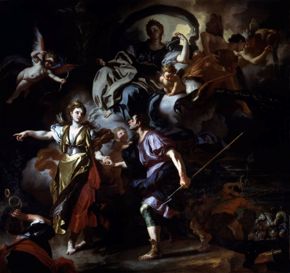
Francesco Solimena, The Royal Hunt of Dido and Aeneas, c. 1712–14, oil on canvas, the Museum of Fine Arts, Houston, gift of Lee and Joe Jamail.
Jan Brueghel the Elder, with figures by an unidentified painter, Diana and Actaeon, c. 1600, oil on copper, Sarah Campbell Blaffer Foundation, Houston.
French, Chenet (one of a pair), c. 1710–40, gilt bronze, the Museum of Fine Arts, Houston, the Rienzi Collection, Museum purchase funded by the Audrey Jones Beck bequest and the Rienzi Society, with additional funding from Isla and Tommy Reckling in honor of Lowell Collins; Meg Goodman and Mike Bonini; Mr. and Mrs. Harris Masterson III, by exchange; Mr. and Mrs. John Goodman; Mr. and Mrs. Luke McConn; Mr. and Mrs. Brad Tucker; Mr. and Mrs. Cliffe Reckling; and various other donors.
French, Chenet (one of a pair), c. 1710–40, gilt bronze, the Museum of Fine Arts, Houston, the Rienzi Collection, Museum purchase funded by the Audrey Jones Beck bequest and the Rienzi Society, with additional funding from Isla and Tommy Reckling in honor of Lowell Collins; Meg Goodman and Mike Bonini; Mr. and Mrs. Harris Masterson III, by exchange; Mr. and Mrs. John Goodman; Mr. and Mrs. Luke McConn; Mr. and Mrs. Brad Tucker; Mr. and Mrs. Cliffe Reckling; and various other donors.
Angelica Kauffman, Ariadne Abandoned by Theseus, 1774, oil on canvas, the Museum of Fine Arts, Houston, gift of Mr. and Mrs. Harris Masterson III in memory of Neill Turner Masterson, Jr.
George Frederick Watts, Clytie, c. 1868, painted plaster, the Museum of Fine Arts, Houston, Museum purchase funded by "One Great Night in November, 2017"
The romantic holiday of Valentine’s Day may be named for a Roman, but many of Saint Valentine’s 3rd-century peers would have believed in deities that seemed to adore scheming against love.
Roman and Greek gods have long been a favorite topic of artists inspired by stories such as Ovid’s Metamorphoses. Although the Museum boasts many works of art celebrating the beauty and joy of love, the collections also include quite a few classically inspired paintings and sculptures highlighting tales of gods and goddesses behaving badly! Keep an eye out for these when you visit on Valentine’s Day (or, maybe more appropriately, Singles Awareness Day):
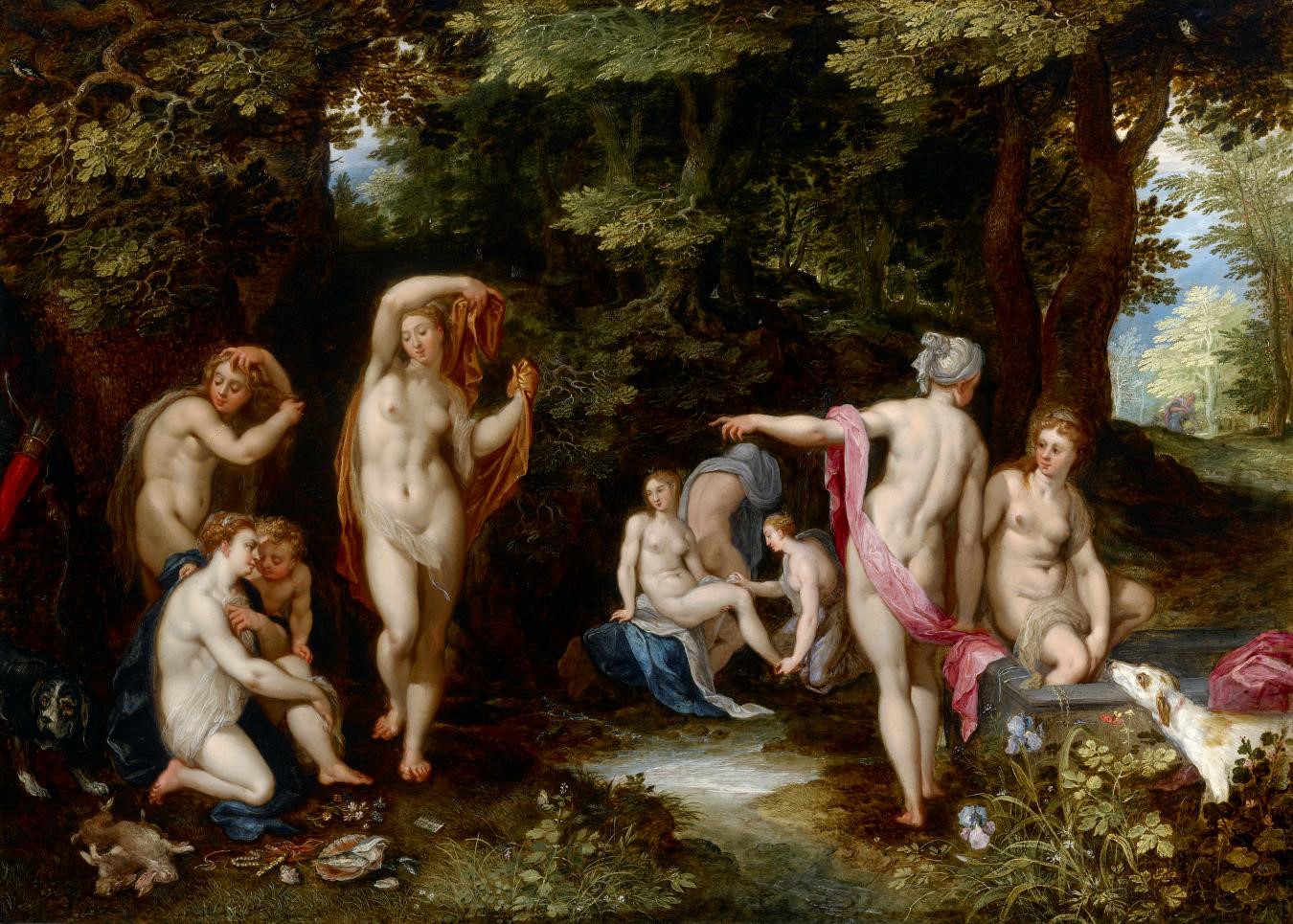
Jan Brueghel the Elder, Diana and Actaeon, c. 1600
Location: Beck Building, second floor
Acteon & Diana
While out hunting, mythic hero Acteon stumbles upon the Roman goddess Diana, surrounded by nymphs as she bathes. This painting captures the moment before Diana catches Actaeon spying, though you can see him in the distance in the far right. As punishment, she transforms him into a stag, and his hounds hunt him down.
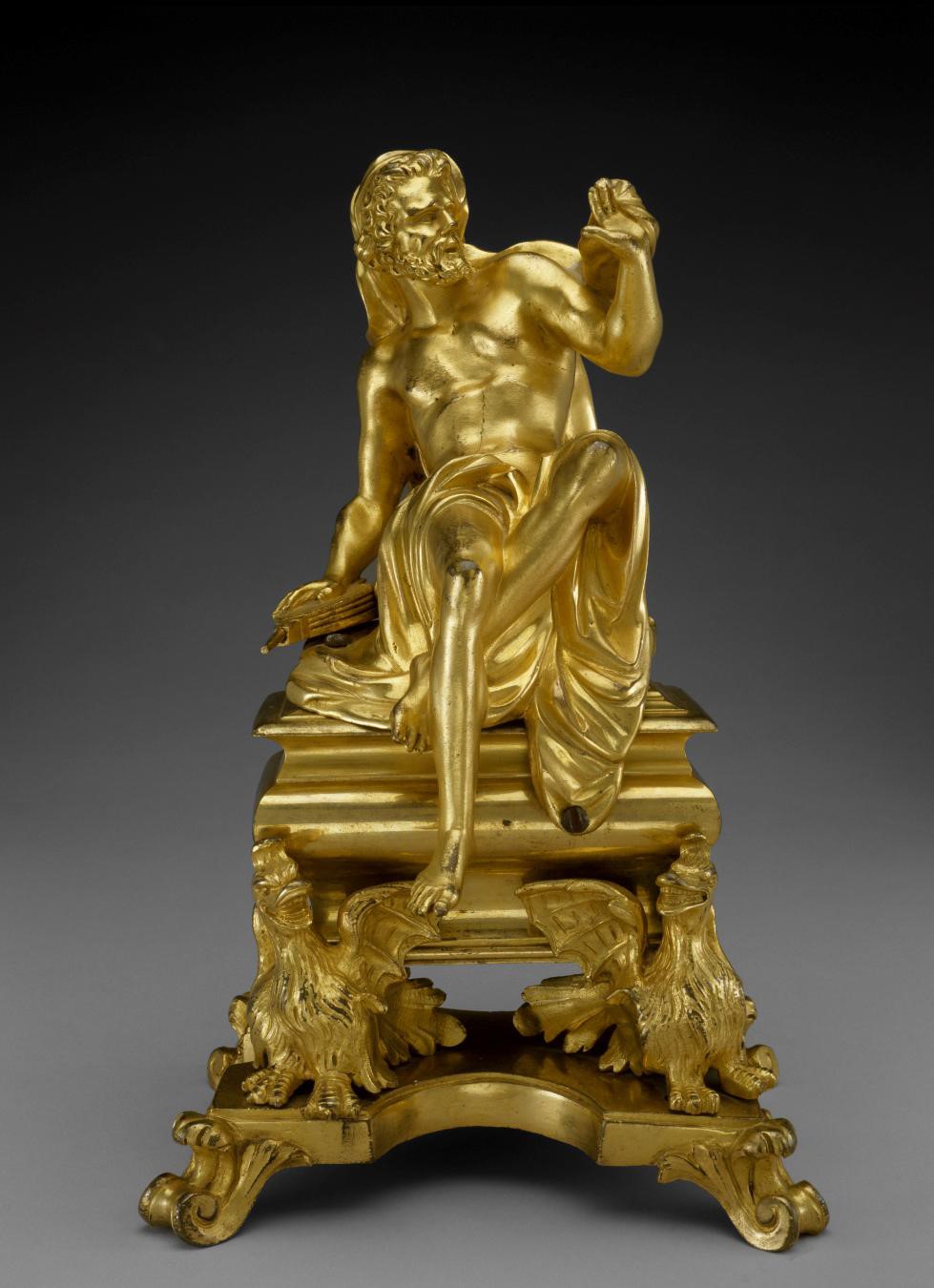
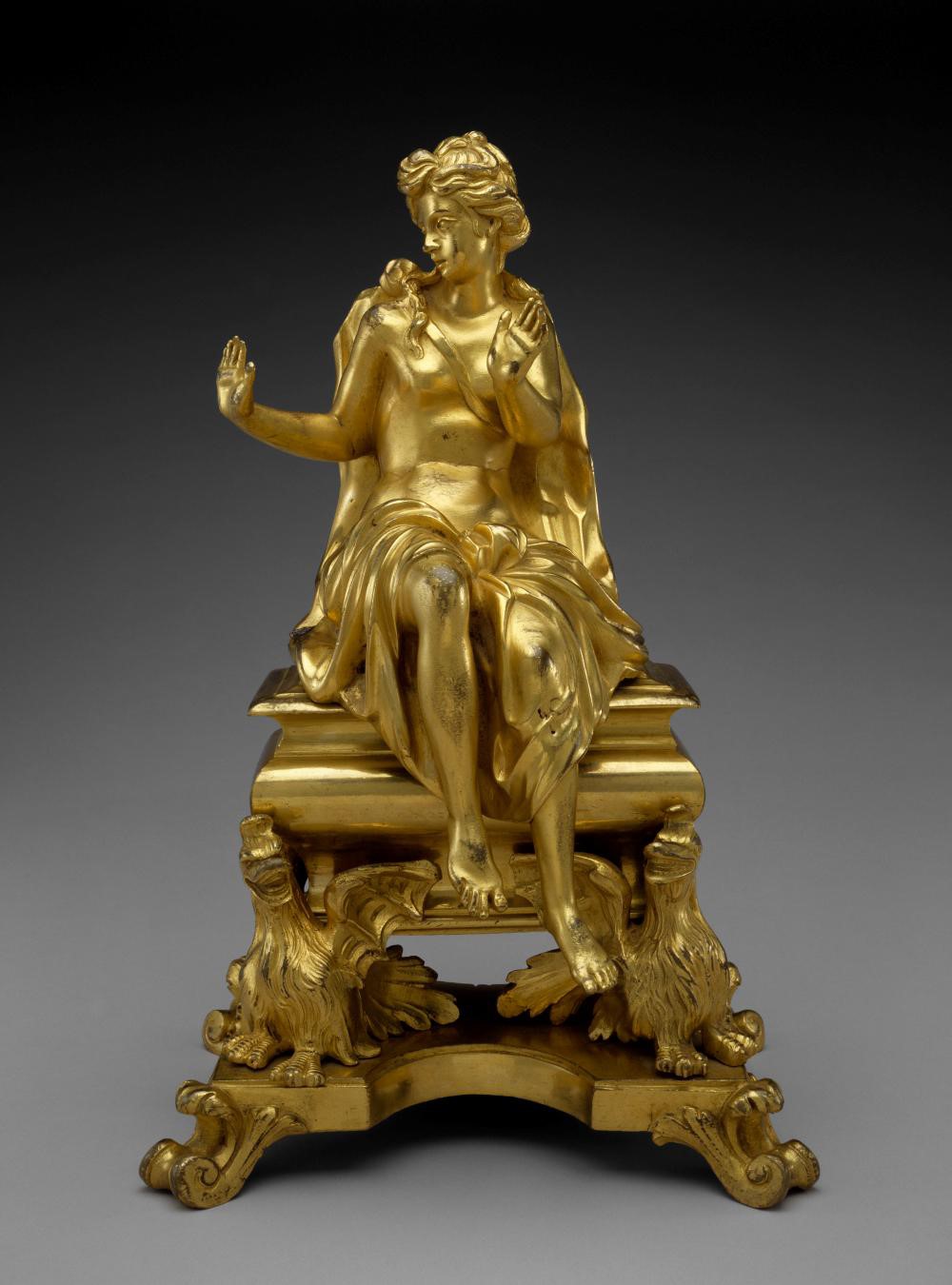
French, Chenets (pair), c. 1710–40
Location: Rienzi
Venus & Vulcan
Though paired as these lovely gilt chenets, or fireplace supports for burning wood, Roman deities Vulcan and Venus weren’t exactly a match made in heaven. The husband-and-wife duo never had children, but that didn’t stop Venus from producing many sons and daughters through her affairs with various lovers, from fellow god Mars to the handsome but doomed mortal Adonis. After all, she is the goddess of love.
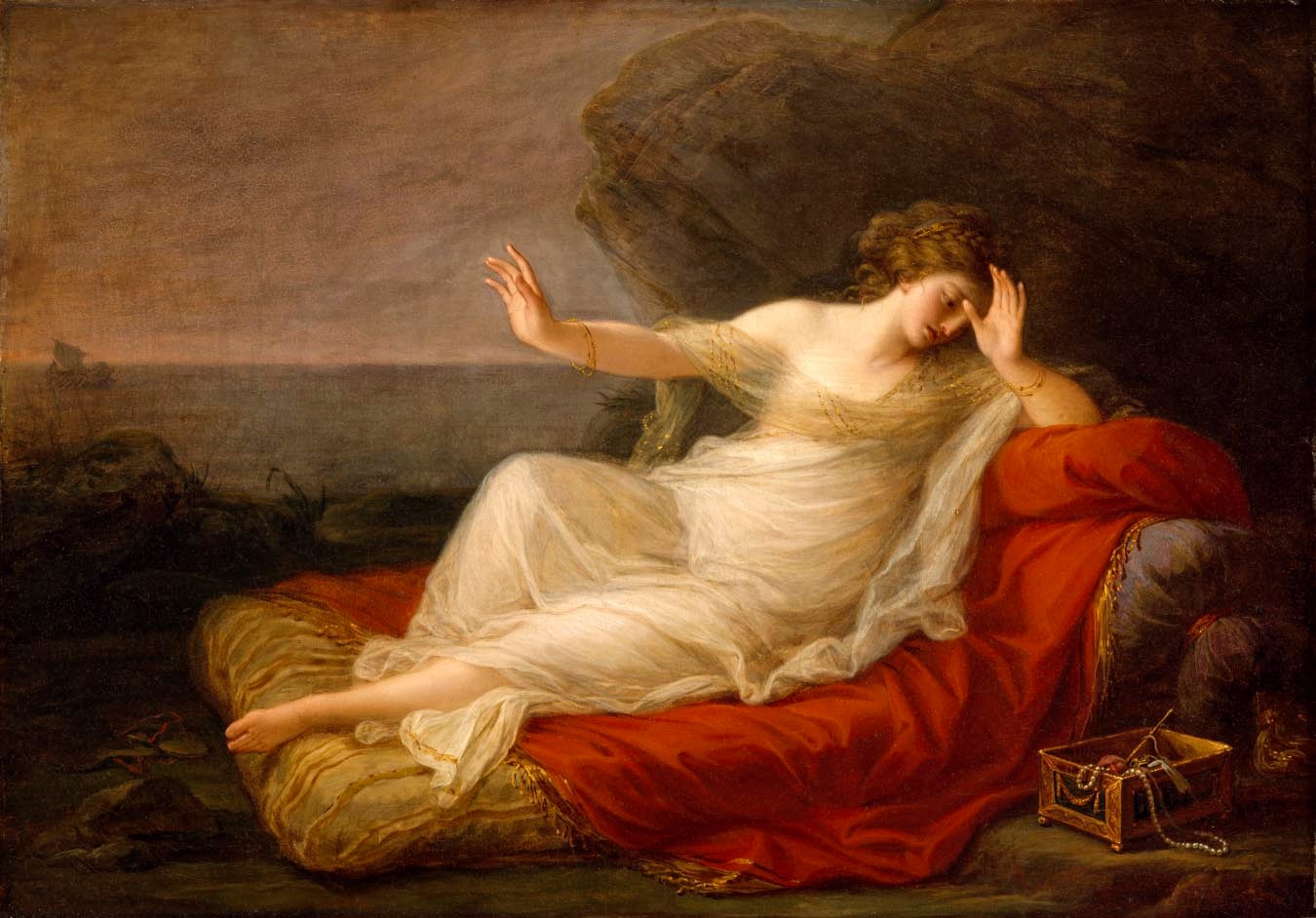
Angelica Kauffmann, Ariadne Abandoned by Theseus, 1774
Location: Rienzi
Ariadne & Theseus & Dionysus
Even though Ariadne betrays her father to save her love, the Greek hero Theseus, from the Minotaur’s labyrinth, Theseus abandons her on the island of Naxos—naturally, because of Athena, goddess of war, who warns Theseus to leave immediately. Theseus’s ship is far on the horizon in this dramatic painting. In some tellings of this myth, Ariadne later marries the god to whom the island belongs, Dionysus.
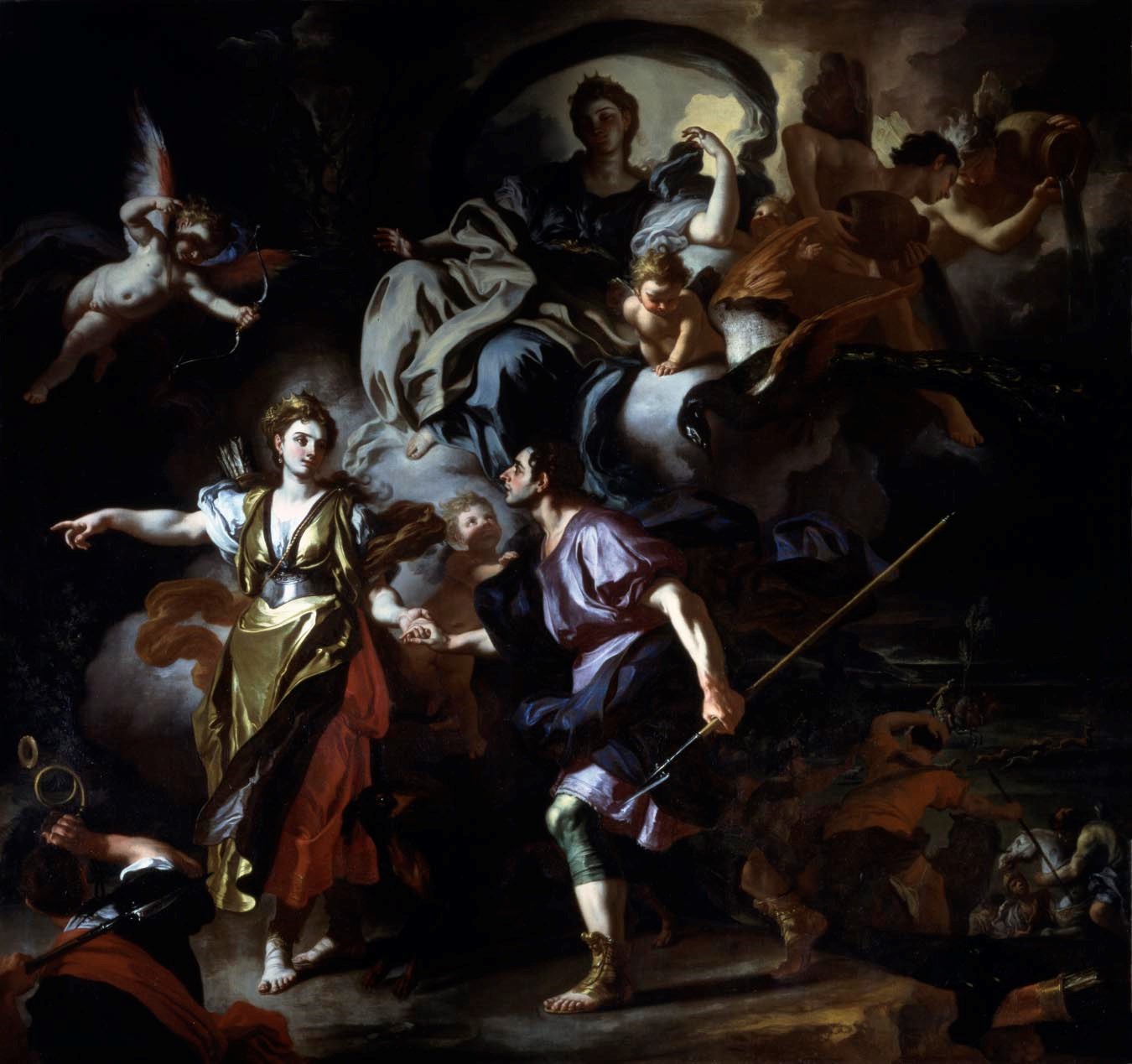
Francesco Solimena, The Royal Hunt of Dido and Aeneas, c. 1712–14
Location: Beck Building, second floor
Aeneas & Dido
This monumental painting features a scene from Virgil’s epic poem, the Aeneid, in which Aeneas, a Trojan prince, and Dido, queen of Carthage, are on a hunting trip when they’re caught in a sudden rainstorm: a scheme cooked up by Roman goddesses Juno and Venus. Aeneas and Dido seek shelter in a cave, where their love story begins—but it’s not meant to be. Ultimately, at the urging of gods Jupiter and Mercury, Aeneas deserts Dido to sail off to fulfill his destiny.
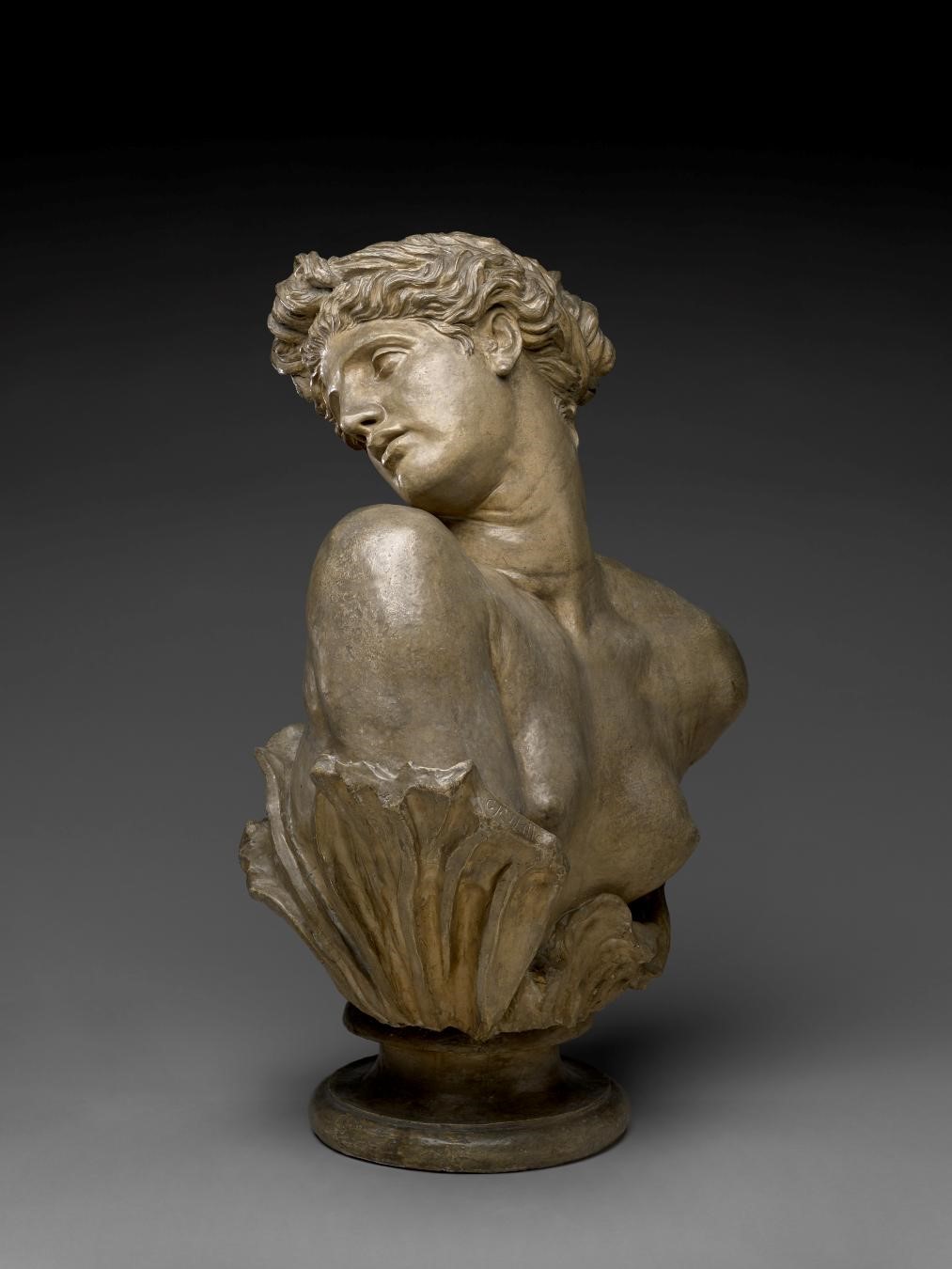
George Frederick Watts, Clytie, c. 1868
Location: Beck Building, second floor
Clytie & the Sun
The sun god abandons nymph Clytie, and in her grief, she sits perfectly still for nine days—doing nothing but gazing at her love, the sun, as he moves across the sky. As the petals at the base of this sculpture suggest, Clytie then turns into a sunflower. (Unrequited love aside, there are fascinating scientific reasons that young sunflowers track the sun!)
Are you intrigued by these star-crossed lovers in art? See which art couple you and your sweetheart are: Take our BuzzFeed quiz inspired by the Twilight Tour on February 14 at our beautiful house museum Rienzi.





